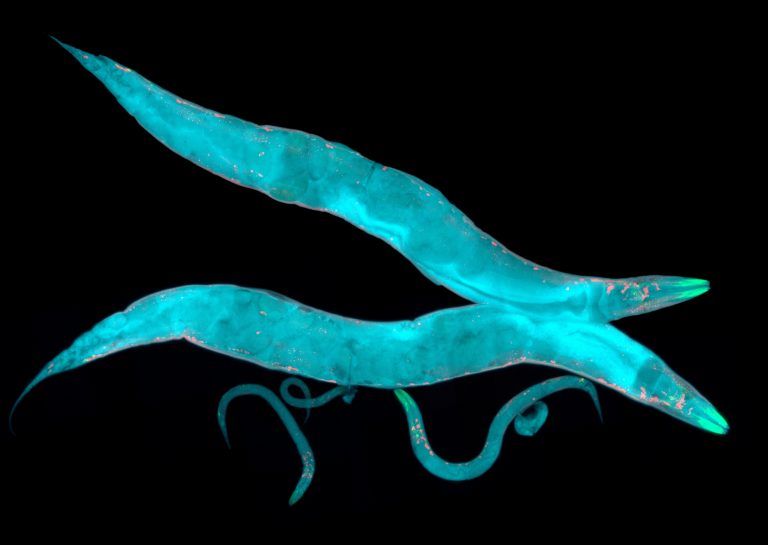
Scientists are using a device employing living worms (nematodes) of the C. elegans species as a biometric device for lung cancer detection. Known as the ‘worm-on-a-chip’, the device tracks the worms’ movements toward odor molecules produced by lung cancer cells. Researchers from Myongji University in South Korea presented their wormy work at this week’s spring conference of the American Chemical Society.
“Lung cancer cells produce a different set of odor molecules than normal cells,” said principal investigator Shin Sik Choi, Ph.D., of the Department of Energy Science and Technology, and the Department of Food and Nutrition at Myongji University in Korea, in a statement. “It’s well known that the soil-dwelling nematode, C. elegans, is attracted or repelled by certain odors, so we came up with an idea that the roundworm could be used to detect lung cancer.”
The device includes a chip made of a polydimethylsiloxane elastomer with a well at both ends connected by channels to a central chamber. The researchers placed the chip on an agar plate. At one end of the chip, they added a drop of culture media from lung cancer cells, and at the other end, they added media from normal lung fibroblasts. They placed worms in the central chamber, and after an hour, they observed that more worms had crawled toward the lung cancer media than the normal media. In contrast, worms that had a mutated odor receptor gene called odr-3 did not show this preferential behavior. The researchers determined that the worms were sensing the volatile organic compound called 2-ethyl-1-hexanol, which has a floral scent.
For several years, other researchers have taken advantage of key nematode features as the smallest multi-cellular model animal: their petite 1mm length, genetic similarity with humans, and unusually sensitive sense of smell. Coupled with bioengineered advances in miniaturization, the pairing has been used as a platform for drug screening and other applications. At least one nematode-based cancer assay is already commercially available: the nematode-nose (N-NOSE) assay system developed by Hirotsu Bio Science to track the movement of C. elegans in response to chemical signals. Even available on Amazon, the product claims to detect chemical signals from more than 15 cancer types: an updated version claims sensitivity of 87.5%. In even simpler models, C. elegans in petri dishes have been observed to track towards the urine of cancer patients, including early-stage pancreatic cancer.
Choi’s lab also has a history of using the nematode model as a means of drug screening. Recently, his lab published findings related to novel curcumin-loaded nanoparticles that reduced the symptoms of Parkinson’s disease in the worm.
Based on their current nematode study in lung cancer, Choi and Jang estimated that the device was about 70% effective at detecting cancer cells in diluted cell culture media. They hope to improve sensitivity of the device by using of worms previously exposed to cancer cell media that would have a “memory” of cancer-specific odor molecules. Once the team has optimized the worm-on-a-chip for detecting cultured lung cancer cells, they plan to move on to testing urine, saliva or even exhaled breath from people for other cancer types.













